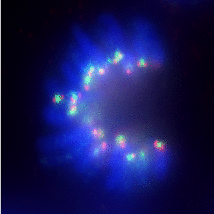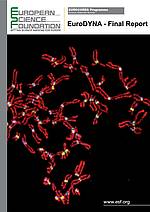EURODYNA FINAL REPORT AND RECOMMENDATIONS NOW AVAILABLE...
The Final Report of EuroDYNA (click here) featuring EuroDYNA Recommendations (click here) from the scientific community to funders and scientists is now accessible.
 |
One of the major challenges in biology is to understand how the genome functions in terms of orchestrating the expression of the many thousand genes it encodes. To tackle this issue, the European Science Foundation (ESF) together with national funding agencies from eight European countries set the stage for 40 research groups to join forces and to coordinate their efforts across Europe within the framework of the European Collaborative Research (EUROCORES) Programme EuroDYNA.
EuroDYNA aims at advancing our knowledge of nuclear organisation in relation to the control of gene expression. The Programme gathers and combines expertise in different fields such as dynamic chromatin structure and nuclear architecture, regulation of gene expression, RNA processing and transport as well as genome surveillance. Latest technologies in molecular biology and biochemistry are employed together with advanced microscopy, structural analysis and computational approaches in order to gain a deeper insight into how the nucleus operates. Detailed knowledge on the principles and mechanisms underlying the control of gene expression is vital for understanding the cause of many diseases, and for developing rational procedures for genomic engineering, including gene therapy and stem cell engineering, and for many biotechnology applications.
There are nine Collaborative Research Projects (CRPs) under the umbrella of EuroDYNA which started their research in 2005. In addition to its multidisciplinary character, the Programme offers a wide range of networking opportunities to the entire EuroDYNA community; providing training possibilities and establishing a platform to stimulate new research initiatives between scientists with related yet slightly different scientific interests and to promote collaboration with other national and European initiatives.


